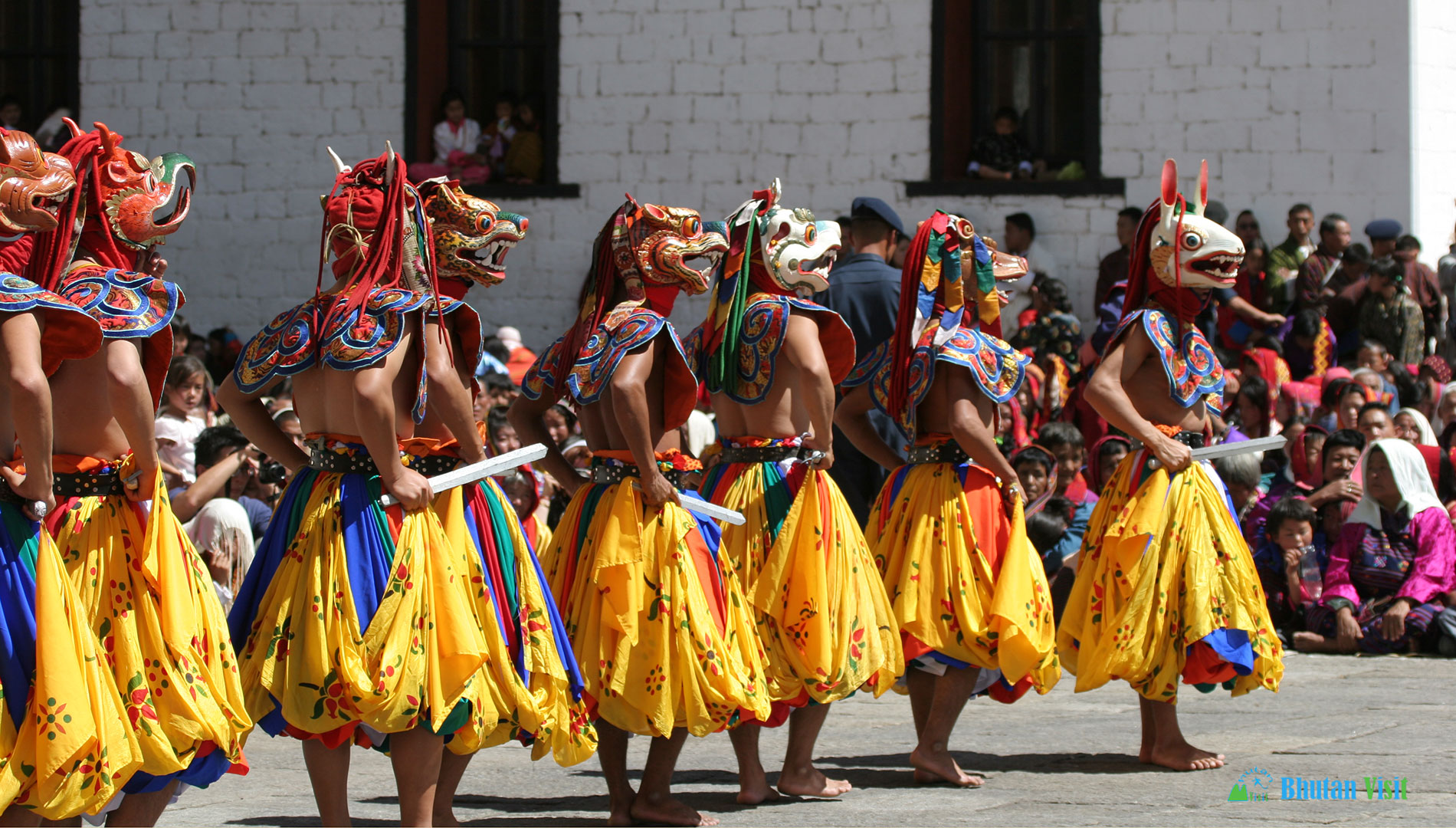About our Festival Tours
Plan your visit to Bhutan to coincide with one of the vibrant religious festivals, known as ‘tshechu’. Tshechu are celebrated to honour Guru Rimpoche, the precious teacher. Guru Rimpoche is the name used by the Bhutanese to refer to the Indian saint, guru Padmasambhava, who travelled all over the Himalayas in the 7th Century and spread tantric Buddhism. Invariably, the tshechu is celebrated on the10th day of the month in the Bhutanese lunar calendar, this being an auspicious date. For this reason, the dates vary from year to year in the western calendar. The most well-known festivals are the Paro festival in spring and the Thimphu festival in autumn because these are also the peak tourist times. However, every region and every village holds its own tsechu at different times of the year. Other colourful festivals take place in Punakha, in the early springtime, Wangdi in the autumn and Trongsa in the middle of winter.
Why are there so many festivals in Bhutan?
Many religious festivals take place throughout the year in temples and monasteries across Bhutan. They all consist of colourful masked dances performed by monks and laymen. These festivals are very popular with the locals as well as the tourists. It is important for every Bhutanese to attend these masked dances in order to prepare themselves to recognize the spirits of the other world when they die.
What will I see at the Festivals?
The festivities consist mainly of masked dances, chanting, blessing or reading religious texts aloud and last from two to five days. The repertory of masked dances and the gorgeous silk and brocade costumes are the same for all the ‘tsechu’ – only the settings are different. The events take place outside and inside the Dzongs. Thronging with locals, these occasions are a visual delight. The climax at some of the festivals is the unfurling of a huge silk appliqué ‘thangka’ from the top of the building. In Paro this takes place at dawn on the final day of the festival. The Punakha Dromchoe, which is celebrated either before or after the Tsechu, is a historical enactment performed to commemorate victory over the Tibetans when they invaded in the 17th century.
Festivals in the East
Travelling further east, experience the different flavour of the festivals away from the capital city. Bumthang has several festivals in the summer and autumn months. In the far east of the country, in Trashiyangtse, the Chorten Kora Tsechu is centred around an enormous stupa during the early spring. It draws not only the locals but also the people of the isolated Merak Sakteng region of Bhutan and even the people of Arnachul Pradesh, in India, who come dressed in their distinctive traditional attire and set up camp for the duration of the festival.
Tour Duration
The tours below suggest a sample minimum duration required to attend a festival in western, central or eastern Bhutan. We can adapt the itineraries and the duration according to your own schedules. You may, for example, choose to attend a festival in western Bhutan that suits your dates, before travelling further east on a tour of a longer duration.
Featured Festival Tours
Western Bhutan: Minimum Duration: 7 nights
Paro
Thimphu
Punakha Dromchoe or Tsechu
Central Bhutan: Minimum Duration: 10 nights
Jakar
Jambay
Eastern Bhutan: Minimum Duration: 15 nights
Chorten Kora
Gom Kora

